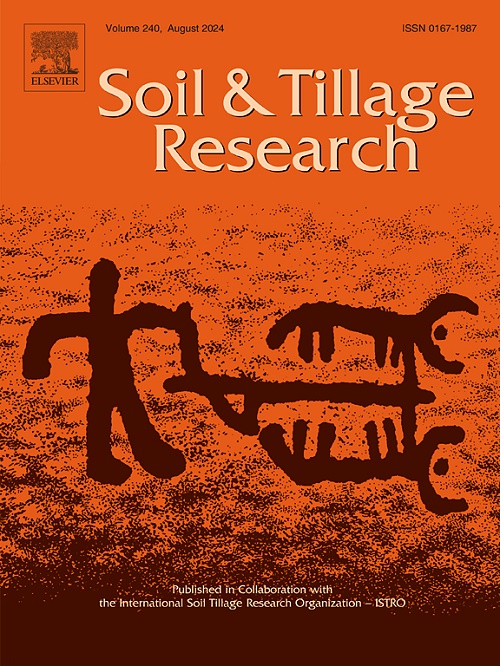Study on farmland drainage scheme in semi-arid area taking into account the environmental impact of farmland-ditch wetland system
IF 6.1
1区 农林科学
Q1 SOIL SCIENCE
引用次数: 0
Abstract
The soil water and salt status of farmland-ditch wetland system not only affects the productivity of farmland, but also affects the ecological function of ditch wetland. Therefore, it is necessary to reasonably regulate the dynamics and spatiotemporal distribution of soil water and salt in farmland and ditch wetlands, ensuring the water and salt content of farmland soil meets the needs of agricultural production, and the soil water and salt content in ditch wetlands is conducive to the healthy growth of wetland vegetation. In order to study the impact of drainage schemes on soil water and salt in farmland, as well as the wetland environment of ditch wetlands, this study takes the Lubotan farmland-ditch wetland system in Fuping County, Shaanxi Province, as an example. Based on the modified Green-Ampt slope rainfall infiltration model, the HYDRUS-2D model was improved to obtain the changes in soil water and salinity of farmland and drainage ditches over time under controlled drainage watertable depth (WTD). The plant growth evolution model of ditch wetlands was used to simulate the growth dynamics of typical plants in ditch wetlands under controlled drainage measures. The results showed that the improved HYDRUS-2D model could be used to simulate soil water and salt transport on farmland and drainage ditch slopes. Under the current drainage mode and two controlled drainage WTDs (1.2 m and 1.5 m), the salinity of farmland soil is lower than the salt tolerance limit of crops. The drainage WTD of 1.5 m is beneficial to the growth of Phragmites australis at the bottom of the drainage ditch. But the drainage WTD of 1.2 m is more conducive to reducing the amount of water and salt discharged from the farmland, thereby diminishing the adverse effects on the downstream environment, and has a positive effect on the growth of typical plants (Suaeda salsa) and the improvement of species diversity. After comprehensive analysis, it is considered that the drainage WTD of 1.2 m is a more suitable drainage control scheme under the existing planting and drainage structure in the study area. This study can provide theoretical support and scientific guidance for the design of drainage control schemes in similar irrigation areas.
求助全文
约1分钟内获得全文
求助全文
来源期刊

Soil & Tillage Research
农林科学-土壤科学
CiteScore
13.00
自引率
6.20%
发文量
266
审稿时长
5 months
期刊介绍:
Soil & Tillage Research examines the physical, chemical and biological changes in the soil caused by tillage and field traffic. Manuscripts will be considered on aspects of soil science, physics, technology, mechanization and applied engineering for a sustainable balance among productivity, environmental quality and profitability. The following are examples of suitable topics within the scope of the journal of Soil and Tillage Research:
The agricultural and biosystems engineering associated with tillage (including no-tillage, reduced-tillage and direct drilling), irrigation and drainage, crops and crop rotations, fertilization, rehabilitation of mine spoils and processes used to modify soils. Soil change effects on establishment and yield of crops, growth of plants and roots, structure and erosion of soil, cycling of carbon and nutrients, greenhouse gas emissions, leaching, runoff and other processes that affect environmental quality. Characterization or modeling of tillage and field traffic responses, soil, climate, or topographic effects, soil deformation processes, tillage tools, traction devices, energy requirements, economics, surface and subsurface water quality effects, tillage effects on weed, pest and disease control, and their interactions.
 求助内容:
求助内容: 应助结果提醒方式:
应助结果提醒方式:


